Visual amplifications
Visual amplifications are defined as any subjective effect which improves one's ability to perceive the external environment through their sense of sight.
This page lists and describes the various visual effects which can occur under the influence of certain psychoactive compounds.
Colour enhancement
Color enhancement is defined as an intensification of the brightness and vividness of colors in the external environment. During this experience, reds may seem “redder”, greens may seem “greener", and all colors will likely appear much more distinct, complex, and visually intense than they comparatively would be during everyday sober living.[1][2][3][4][5][6][7] At higher levels, this effect can sometimes result in seeing colors which are perceived as surreal or seemingly impossible.[3][4]
Color enhancement is often accompanied by other coinciding effects such as visual acuity enhancement and pattern recognition enhancement.[1][2] It is most commonly induced under the influence of mild dosages of psychedelic compounds, such as LSD, psilocybin, and mescaline. However, it can also occur to a lesser extent under the influence of certain stimulants and dissociatives such as MDMA, ketamine[8], or 3-MeO-PCP.
Image examples
| Caption | |
|---|---|
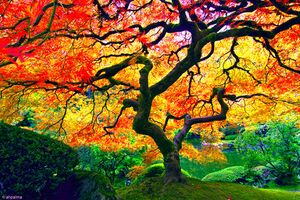 | Japanese Garden by Anonymous |
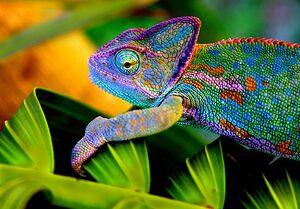 | Chameleon by Anonymous. |
 | Paradise island by Subsentience |
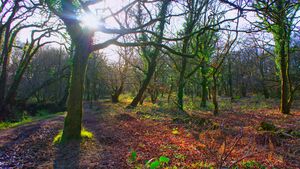 | The Woods by Chelsea Morgan |
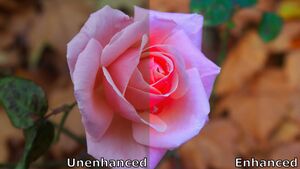 | Rose by Chelsea Morgan |
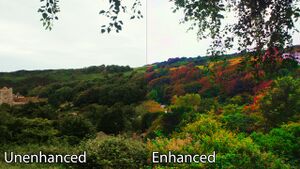 | Showing differences by Chelsea Morgan |
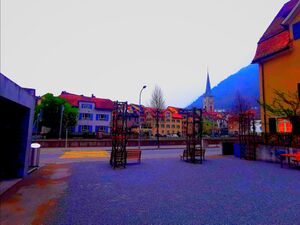 | Chur, Switzerland by Naps284 |
Magnification
Magnification (also known as macropsia or megalopsia[9]) is defined as the experience of distant details within one's visual field appearing closer and more "zoomed in" than they actually are due to both visual enhancements and hallucinatory effects.[10] This can give the perception that one is seeing objects from greater distances than is usually possible within everyday life.
At its lower levels, this can allow people to see nearby objects (such as within reaching distance) as much closer than they really are, resulting in the perception that their visual capabilities have been enhanced.[10] At its higher levels, this can induce the perception of seeing distant objects as if they were right in front of the user despite their distance. These distances can range from several feet to hundreds of meters. Since this is most likely a physiological impossibility, it suggests that higher level magnification may actually be a seamless hallucinatory state in which the details of distant visual input are predictively simulated in a realistic and convincing manner.
It's worth noting that this effect is considerably more likely to occur if a person spends extended periods of time staring at an object or scene within the distance.
Magnification is often accompanied by other coinciding effects such as visual acuity enhancement and pattern recognition enhancement. It is a rare effect that is most commonly induced under the influence of moderate dosages of psychedelic compounds, such as LSD, psilocybin, and mescaline.
Pattern recognition enhancement
Pattern recognition enhancement is defined as an increase in a person's ability and tendency to recognize patterns within vague stimuli.
Seeing patterns resemble human faces is an innate ability which humans possess in everyday life and is well documented in scientific literature under the term pareidolia.[11][12] Common examples of this include spotting faces in the front of a car, or seeing different objects in clouds.[6]
During this effect, patterns can be significantly more pronounced than it would usually be during a sober state.[13][14] For example, remarkably detailed images may appear embedded in scenery, everyday objects may look like faces, and clouds may appear as fantastical objects all without any visual alterations taking place. Once an image has been perceived within an object or landscape, the mind may further exaggerate this recognition through the hallucinatory effect known as transformations, which goes beyond pareidolia and becomes a standard visual hallucination.
Pattern recognition enhancement is often accompanied by other coinciding effects such as visual acuity enhancement and colour enhancement.[1][2] It is most commonly induced under the influence of mild dosages of psychedelic compounds, such as LSD, psilocybin, and mescaline.
Image examples
| Caption | |
|---|---|
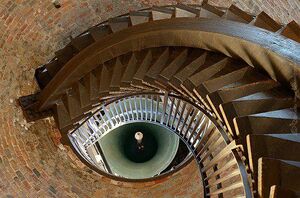 | Eye of the tower by Davide Lombardi |
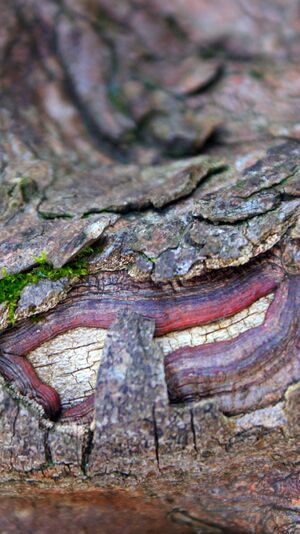 | Smile in tree bark by Chelsea Morgan |
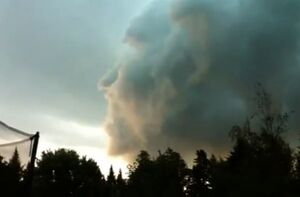 | Face within a cloud by Denis Farmer |
 | The Forest Has Eyes by Bev Doolittle |
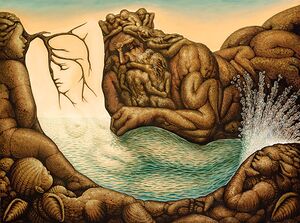 | Absents of the mermaid by Octavio Ocampo |
 | Face in a cloud by Neil Usher |
 | Face within tree bark by Bev Doolittle |
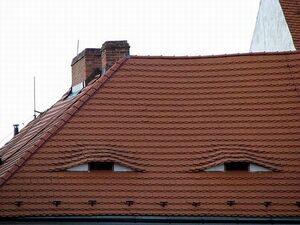 | Squinting eyes on a roof top by Anonymous |
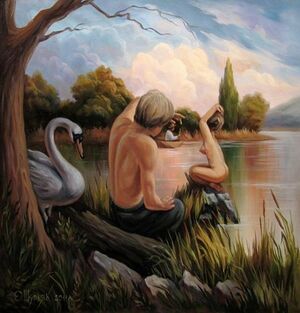 | Optical illusion by Oleg Shuplyak |
 | Skullflower by Anonymous |
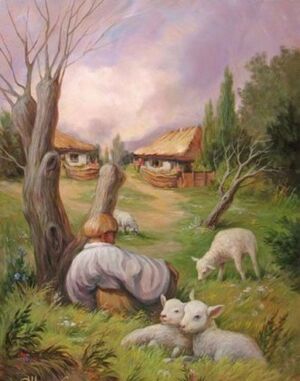 | Optical illusion by Oleg Shuplyak |
Visual acuity enhancement
Visual acuity enhancement is defined as a heightening of the clearness and clarity of vision. This results in the visual details of the external environment becoming sharpened to the point where the edges of objects become perceived as extremely focused, clear, and defined. The experience of this acuity enhancement can be likened to bringing a camera or projector lens that was slightly blurry into focus. At its highest level, a person may experience the ability to observe and comprehend their entire visual field simultaneously, including their peripheral vision. This is in contrast to the default sober state where a person is only able to perceive the small area of central vision in detail.[15]
While under the influence of this effect, it is common for people to suddenly notice patterns and details in the environment they may have never previously noticed or appreciated. For example, the complexity and perceived beauty of the visual input often become apparent when looking at sceneries, nature, and everyday textures.
Visual acuity enhancement is often accompanied by other coinciding effects such as color enhancement and pattern recognition enhancement.[1][2] It is most commonly induced under the influence of mild dosages of psychedelic compounds, such as LSD, psilocybin, and mescaline. However, it can also occur to a lesser extent under the influence of certain stimulants and dissociatives such as MDMA or 3-MeO-PCP.
Image examples
| Caption | |
|---|---|
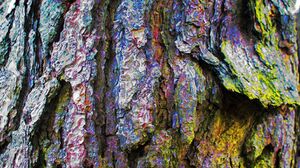 | Tree Bark by Chelsea Morgan |
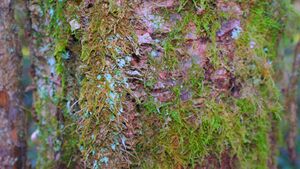 | Moss on tree Bark by Chelsea Morgan |
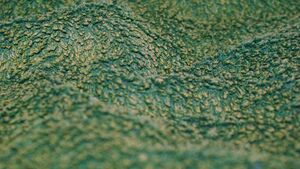 | Towel by Chelsea Morgan |
Visual processing acceleration
Visual processing acceleration is defined as an increase in the speed at which a person can perceive and interpret rapidly occurring events. It is most commonly experienced during events which are felt to be either dangerous, intense, or highly novel.[16][17][18] The effect gives the appearance that the external environment is being viewed in slow motion and that brief moments of time have been "stretched out". For example, fast moving objects such as birds, insects, and cars may begin to present themselves as clearly viewable instead of as fleeting blurs of motion, as they may during every day sobriety.
In terms of its intensity, this effect usually manifests subtly, only slightly slowing down a person's perception of motion. However, in rare cases, this effect can temporarily slow the visual perception of time to a near stand-still, causing events to appear dramatically slower.
Visual processing acceleration is often accompanied by other coinciding effects such as visual acuity enhancement and thought acceleration. It is most commonly induced under the influence of moderate dosages of psychedelic compounds, such as LSD, psilocybin, and mescaline.
See also
References
- ↑ 1.0 1.1 1.2 1.3 Papoutsis, Ioannis; Nikolaou, Panagiota; Stefanidou, Maria; Spiliopoulou, Chara; Athanaselis, Sotiris (2014). "25B-NBOMe and its precursor 2C-B: modern trends and hidden dangers". Forensic Toxicology. 33 (1): 1–11. doi:10.1007/s11419-014-0242-9. ISSN 1860-8965.
- ↑ 2.0 2.1 2.2 2.3 Bersani, Francesco Saverio; Corazza, Ornella; Albano, Gabriella; Valeriani, Giuseppe; Santacroce, Rita; Bolzan Mariotti Posocco, Flaminia; Cinosi, Eduardo; Simonato, Pierluigi; Martinotti, Giovanni; Bersani, Giuseppe; Schifano, Fabrizio (2014). "25C-NBOMe: Preliminary Data on Pharmacology, Psychoactive Effects, and Toxicity of a New Potent and Dangerous Hallucinogenic Drug". BioMed Research International. 2014: 1–6. doi:10.1155/2014/734749. ISSN 2314-6133.
- ↑ 3.0 3.1 Hartman, Alan M.; Hollister, Leo E. (1963). "Effect of mescaline, lysergic acid diethylamide and psilocybin on color perception". Psychopharmacologia. 4 (6): 441–451. doi:10.1007/BF00403349. ISSN 0033-3158.
- ↑ 4.0 4.1 Kleinman, J. E.; Gillin, J. C.; Wyatt, R. J. (1977). "A Comparison of the Phenomenology of Hallucinogens and Schizophrenia From Some Autobiographical Accounts*". Schizophrenia Bulletin. 3 (4): 560–586. doi:10.1093/schbul/3.4.560. ISSN 0586-7614.
- ↑ Obreshkova, D., Kandilarov, I., Angelova, V. T., Iliev, Y., Atanasov, P., & Fotev, P. S. (2017). PHARMACO-TOXICOLOGICAL ASPECTS AND ANALYSIS OF PHENYLALKYLAMINE AND INDOLYLALKYLAMINE HALLUCINOGENS (REVIEW). PHARMACIA, 64(1), 41-42. http://bsphs.org/wp-content/uploads/2017/04/Angelova.pdf
- ↑ 6.0 6.1 Abraham, Henry David (1983). "Visual Phenomenology of the LSD Flashback". Archives of General Psychiatry. 40 (8): 884. doi:10.1001/archpsyc.1983.01790070074009. ISSN 0003-990X.
- ↑ Baggott, M.J.; Coyle, J.R.; Erowid, E.; Erowid, F.; Robertson, L.C. (2011). "Abnormal visual experiences in individuals with histories of hallucinogen use: A web-based questionnaire". Drug and Alcohol Dependence. 114 (1): 61–67. doi:10.1016/j.drugalcdep.2010.09.006. ISSN 0376-8716.
- ↑ Dillon, P (2003). "Patterns of use and harms associated with non-medical ketamine use". Drug and Alcohol Dependence. 69 (1): 23–28. doi:10.1016/S0376-8716(02)00243-0. ISSN 0376-8716.
- ↑ "macropsia". APA Dictionary of Psychology. Retrieved 20 May 2022.
- ↑ 10.0 10.1 Fischer, Roland; Hill, Richard; Thatcher, Karen; Scheib, James (1970). "Psilocybin-induced contraction of nearby visual space". Agents and Actions. 1 (4): 190–197. doi:10.1007/BF01965761. ISSN 0065-4299.
- ↑ Liu, Jiangang; Li, Jun; Feng, Lu; Li, Ling; Tian, Jie; Lee, Kang (2014). "Seeing Jesus in toast: Neural and behavioral correlates of face pareidolia". Cortex. 53: 60–77. doi:10.1016/j.cortex.2014.01.013. ISSN 0010-9452.
- ↑ Hadjikhani, Nouchine; Kato, Masaharu; Mugitani, Ryoko (2015). "Pareidolia in Infants". PLOS ONE. 10 (2): e0118539. doi:10.1371/journal.pone.0118539. ISSN 1932-6203.
- ↑ Belser, Alexander B.; Agin-Liebes, Gabrielle; Swift, T. Cody; Terrana, Sara; Devenot, Neşe; Friedman, Harris L.; Guss, Jeffrey; Bossis, Anthony; Ross, Stephen (2017). "Patient Experiences of Psilocybin-Assisted Psychotherapy: An Interpretative Phenomenological Analysis". Journal of Humanistic Psychology. 57 (4): 354–388. doi:10.1177/0022167817706884. ISSN 0022-1678.
- ↑ Halberstadt, Adam L. (2015). "Recent advances in the neuropsychopharmacology of serotonergic hallucinogens". Behavioural Brain Research. 277: 99–120. doi:10.1016/j.bbr.2014.07.016. ISSN 0166-4328.
- ↑ Sardegna, J., Shelly, S. (2002). The Encyclopedia of Blindness and Vision Impairment. Infobase Publishing. ISBN 9780816066230.
- ↑ Wittmann, Marc; Leland, David S.; Churan, Jan; Paulus, Martin P. (2007). "Impaired time perception and motor timing in stimulant-dependent subjects". Drug and Alcohol Dependence. 90 (2-3): 183–192. doi:10.1016/j.drugalcdep.2007.03.005. ISSN 0376-8716.
- ↑ Arstila, Valtteri (2012). "Time Slows Down during Accidents". Frontiers in Psychology. 3. doi:10.3389/fpsyg.2012.00196. ISSN 1664-1078.
- ↑ Burr, David; Stetson, Chess; Fiesta, Matthew P.; Eagleman, David M. (2007). "Does Time Really Slow Down during a Frightening Event?". PLoS ONE. 2 (12): e1295. doi:10.1371/journal.pone.0001295. ISSN 1932-6203.